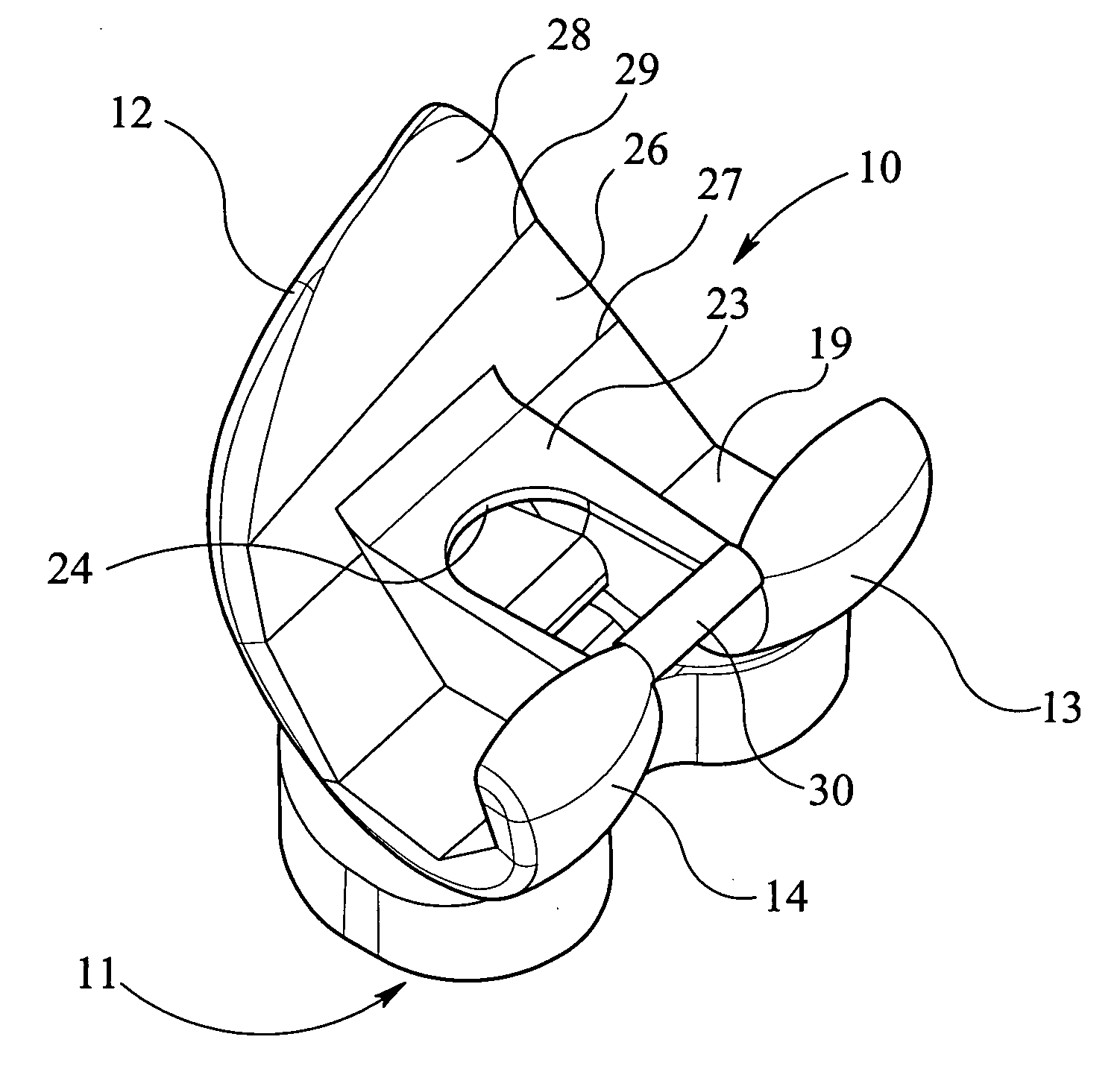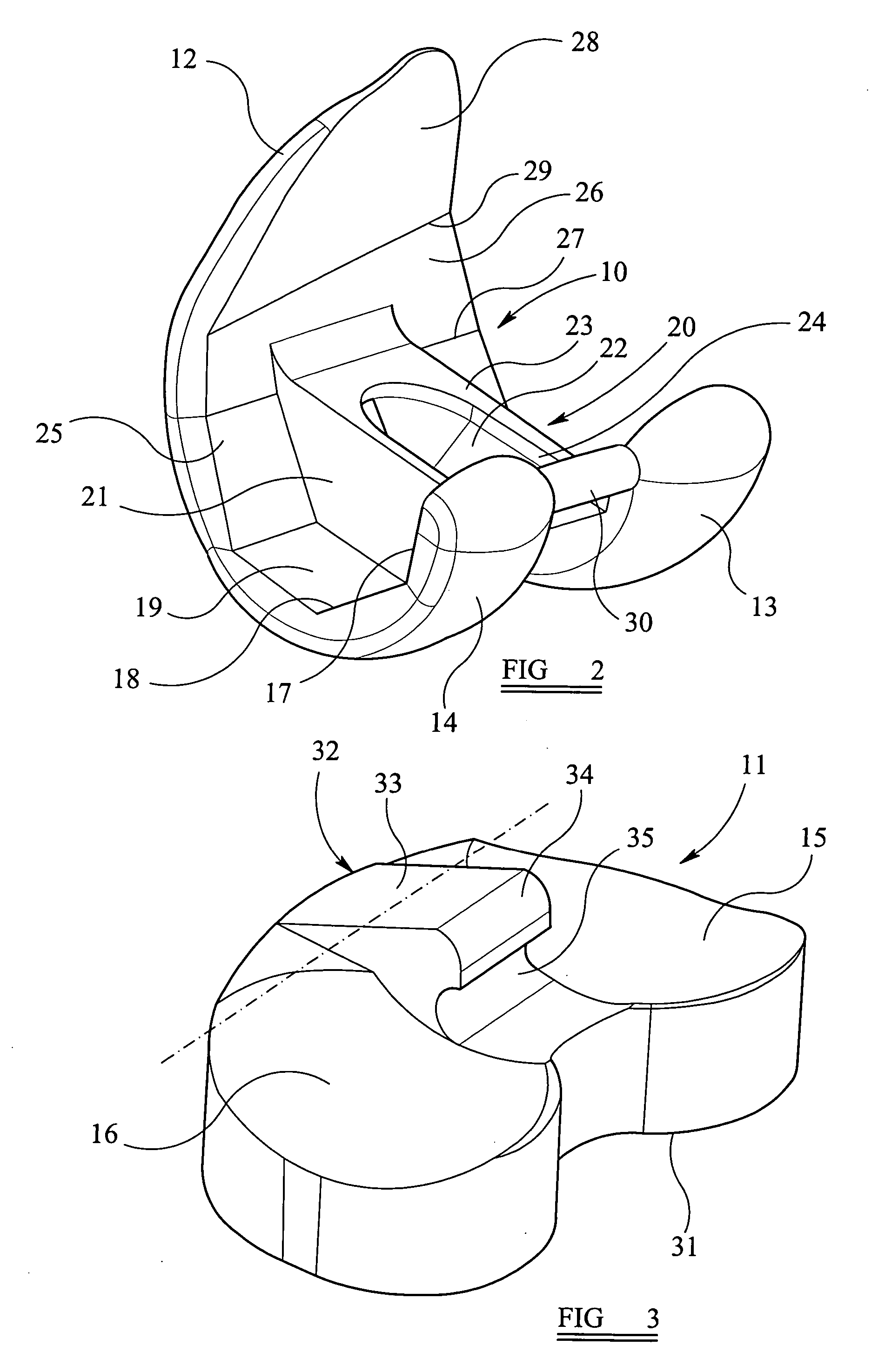Knee prosthesis
a prosthesis and femur technology, applied in the field of knee prosthesis, can solve the problems of supra-condylar fracture of the femur, surgeon with a problem, and inability to accurately match up the bony landmarks
- Summary
- Abstract
- Description
- Claims
- Application Information
AI Technical Summary
Benefits of technology
Problems solved by technology
Method used
Image
Examples
Embodiment Construction
[0021] The invention relates to a femoral component of a knee prosthesis, the femoral component being shown alone in FIG. 2.
[0022] As is well known, a knee prosthesis generally comprises a femoral component, a tibial component, and a meniscal or bearing component. Generally the femoral and tibial components are of metal with the bearing component being of plastics material such as polyethylene and fitting between the femoral and tibial components. In the accompanying drawings the tibial component is not shown, but it is to be understood that this would generally be of conventional form, such as in U.S. Pat. Nos. 5,387,240 and 5,658,342 having a flat upper surface in use, on which the flat lower surface of the bearing component engages, and a depending lower fixing stem. In FIGS. 2 and 3, the femoral component is indicated by the numeral 10 and the bearing component is indicated by the numeral 11.
[0023] The knee replacement device shown in the drawings is of bicondylar form, with t...
PUM
 Login to View More
Login to View More Abstract
Description
Claims
Application Information
 Login to View More
Login to View More - R&D
- Intellectual Property
- Life Sciences
- Materials
- Tech Scout
- Unparalleled Data Quality
- Higher Quality Content
- 60% Fewer Hallucinations
Browse by: Latest US Patents, China's latest patents, Technical Efficacy Thesaurus, Application Domain, Technology Topic, Popular Technical Reports.
© 2025 PatSnap. All rights reserved.Legal|Privacy policy|Modern Slavery Act Transparency Statement|Sitemap|About US| Contact US: help@patsnap.com



